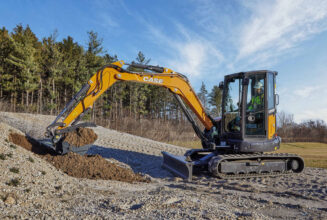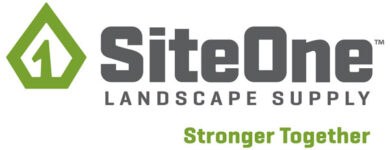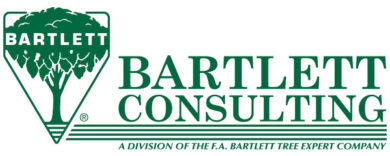Making the (Up) Grade: Generating more business through irrigation system retrofits and upgrades
By Lynette Von Minden
Photo provided by Rain BirdThe past few years have been challenging for most landscape and irrigation contractors. Many contractors who once relied heavily on revenue generated from new irrigation system installations have had to adapt to stressful market conditions and reevaluate their business models to survive. New construction starts dipped to such low levels that there was no longer enough new installation business to go around, and many landscape businesses that focused on new installations struggled or went out of business. Now, the economy is beginning to show signs of improvement and new construction starts are trending upward in many business sectors. Still, contractors must remember the lessons learned over the past few years and remain creative in finding new revenue streams to improve cash flow. For many contractors, the best way to accomplish this task is by encouraging customers with existing irrigation systems to invest in upgrades.
Success in landing irrigation system upgrade business requires a proactive approach and a keen eye toward water efficiency. It also requires convincing customers who may be completely unaware that their irrigation system is wasting copious amounts of water that an investment will improve plant health, save water and, ultimately, save money in the long run. Finding the right solutions, and convincing customers to invest isn’t always easy, but there are a few key focus areas that can improve the likelihood of successful proposals.
Inspecting the site
According to Greg Palumbo, Rain Bird’s product manager for sprays, the spring season offers landscape and irrigation contractors an invaluable opportunity to evaluate an irrigation system and develop proposals for repairs, preventative maintenance and upgrades. Contractors who spend time evaluating their customers’ irrigation systems in the spring and creating successful proposals can quickly generate revenue after a long winter season, and, in many instances, gain a competitive edge. “Contractors who excel at this process can get a head start on their competition and enhance customer loyalty by providing superior service,” said Palumbo. “This head start can also help contractors justify adding seasonal employees earlier in the year, allowing them to choose the most talented and productive workers before their rivals even start the hiring process.”
Because irrigation systems are turned off for at least a portion of the winter season in most parts of the country, the spring system start-up provides an opportunity for the contractor to focus on the irrigation system. “Often the current maintenance contractor is not the contractor who installed the system,” said Palumbo. “When this is the case, the spring start-up is a great time to become familiar with someone else’s work. Always look for signs of poor installation practices. These are usually good indicators for the type and severity of problems you could encounter with a system as it ages.”
During a site inspection, contractors may want to consider using an itemized list of system checkpoints to evaluate their customer’s system as thoroughly as possible. Tom Kundrat, Rain Bird’s product manager for rotary nozzles, said that his company provides contractors with a pre-printed “Walk-Through Observation Worksheet” that can help tremendously with the site inspection process. This worksheet prompts contractors to look at virtually every aspect of the site, from its physical characteristics to its current watering schedule to the types of sprays and rotors present. After noting site conditions such as static pressure, dynamic pressure, water source, water rate and soil type, the next stop during the inspection should be at the controller to determine how long and how often the system is running. “If the contractor performing the inspections is the same one who originally installed the system, run-time information may already be available in the client’s file or in the zone table inside the controller door,” said Kundrat. “If not, the contractor must examine the irrigation schedule zone by zone to make a proper assessment. In many cases, they will find zones with excessive run times.”
The next step is to walk each zone to identify what sprinklers are being used and look for any problems <dash> including brown spots, uneven coverage, missing heads, leaky heads and heads that are out of adjustment. During this portion of the inspection, contractors can also determine if the rotors and sprays being used are the best for that customer’s site and situation. “For example, if you’re dealing with a sloped area that’s causing water to run off onto the sidewalk or street below, you may want to consider rotors or sprays with integrated check valves,” said Kundrat. “In areas irrigated by sprays, this situation can be alleviated by replacing existing sprays with rotary nozzles. The lower precipitation rate of rotary nozzles works well on slopes and compacted soil. Contractors should also look at the valves to make sure everything is working correctly.”
Other issues to look for include unmatched precipitation rates, high or low pressure situations and areas being over-watered or under-watered. It’s also a good idea to consider the efficiency and features built into the customer’s current controller. It’s possible they might benefit from a smart controller that automatically updates watering schedules based on current weather conditions and ET (evapotranspiration) rates. Some Smart controllers like Rain Bird’s ESP-SMT also allow the contractor to input specific zone information. This makes it possible to really customize watering schedules based not only on weather and ET, but also on degree of slope, plant type, soil type and sun exposure.
It’s also important to note other physical characteristics of the site during the walk-through, such as plant types, variations in sun exposure throughout the landscapes, soil compaction levels and any new flower beds, ornamental grasses, shrubs or trees that may have been added since the original irrigation system was installed. Many clients don’t realize that new additions to the landscape <dash> such as flower beds, tall ornamental grasses, shrubs or trees <dash> can disrupt the spray patterns established when the original irrigation system was designed. Planting beds that are not being irrigated or that are inefficiently irrigated with overhead sprays are also prime opportunities to install efficient drip irrigation that will save both time and water.
“Contractors will typically find upgrade opportunities due to common problems in their region,” said Kundrat. “Slopes, hills, clay soils, wind and large trees are examples of issues contractors come across. High water pressure is also a common problem that can easily be solved with a pressure-regulating spray head or rotor that saves a ton of water. Smart controllers and rain sensors have also been growing in popularity with customers over the last few years as easy upgrades.”
Rain Bird also offers a “Right Choice Solution” sheet that describes common irrigation system problems and the various products that can be implemented as solutions. Both Palumbo and Kundrat suggest that contractors provide a “good, better, best” series of upgrade options to demonstrate professionalism and differentiate themselves from their competition. By offering a range of options at different price points, contractors can help their customers find solutions that fit their unique needs and budgets.
Convincing the customer
Throughout the United States, many water authorities are increasing their rates by five to 15 percent annually — a fact that supports the case for making water-efficient upgrades to a customer’s irrigation system. The fact that far more attention is being paid to water conservation can certainly help contractors get customers over the hurdle of spending money to improve their systems. Not every customer is going to be environmentally conscious by nature, but locally enforced watering restrictions can make a solid case for the installation of water-saving irrigation system components.
“Identify areas in your region that have high water rates, water rebates or water restrictions and use that information to convince the customer to upgrade,” said Kundrat. “For instance, if you know your customer is paying a lot for water, show them how the product can help them save money by decreasing that expense. Give them an idea of what they can expect as a return on investment.”
How customers recognize the returns on their investments will differ from person to person. Some customers may insist on seeing a return through reduced water consumption and a lower water bill. For these customers, it may be a good idea to have them call their water provider for a summary of consumption volume over the last 12 months for comparison in the new year. Other customers will be less concerned with dollars and cents and will insist on improving the appearance of their landscape. With these customers, the spring start-up can lead to other opportunities for adding spring color, new plant material or hardscapes.
By spending time talking with their clients, contractors are more likely to present themselves as trusted experts and long-term partners who share a common goal <dash> creating and maintaining irrigation systems that fit needs and budgets. This atmosphere of trust can open a customer’s mind to making positive updates to their irrigation systems that will benefit them for years to come.
“Each client is different,” said Palumbo. “The best advice is to get to know your customer and develop a relationship. Get to know what is important to them and customize proposals to address their concerns. This will help build trust, increase retention, and generate positive and cost-free word-of-mouth advertising.”
Lynette Von Minden is public relations counsel with Swanson Russell.
Article provided by Rain Bird. For more information, visit www.rainbird.com



